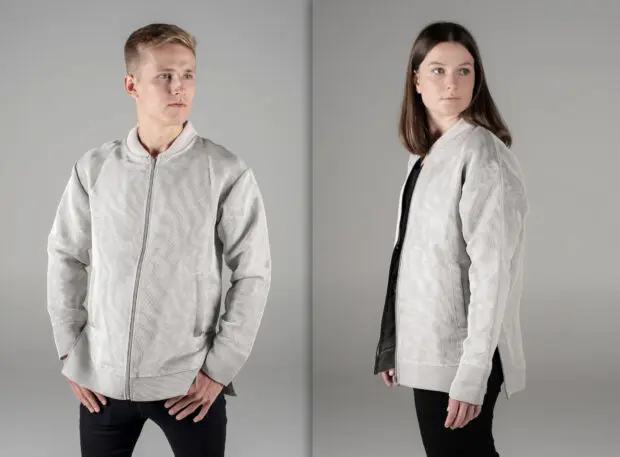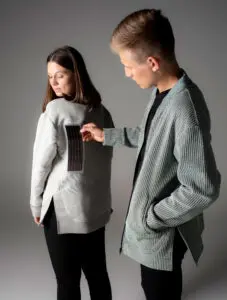It’s become increasingly clear that the fashion industry accelerates climate change, spewing out 4% of all global carbon emissions. But perhaps soon, our clothes could be redesigned to actively reduce our carbon footprint.
A team of researchers at Aalto University in Finland is working to turn this vision into reality. They’ve developed a technique for embedding textiles with invisible solar panels that provide an energy source for either wearable devices or phones. This would allow designers to create solar-powered clothing without altering the outfit’s aesthetics. At scale, the researchers believe these garments could reduce our need for traditional energy sources, most of which emit greenhouse gas.

The team partnered with physicists at Aalto University to develop ultrathin solar panels that can be incorporated into virtually any textile, from cotton to linen to viscose to polyester—they just need to be sewn between two layers of fabric. “These solar panels would work in clothes, but they would also work in home textiles,” Ilén says. “You can imagine curtains or sofas harvesting energy from light and using it to power devices.”

The Solar-Powered Textiles team created prototypes of garments that were shown at Helsinki Design Week as part of an exhibition called Designs for a Cooler Planet. But Ilén says it would be fairly easy to commercialize these new materials. Mills and fashion brands wouldn’t need to fundamentally change their fabrics; they could simply sew the solar cells under the outer fabric layer. The solar panel was designed to be very thin and flexible, covered in a layer of fabric, so if it was incorporated into a T-shirt, it would feel soft against the skin. Ilén says the team very deliberately constructed the solar panels to be separate from the fabric so that the two could be taken apart and recycled separately. “We know that recycling is already a big challenge in the fashion industry, and we didn’t want to contribute to this problem,” she says.
In the short term, Ilén says this technology is likely to appeal to companies that make wearable devices in clothes, like activewear brands that want to embed heart rate monitors. But ultimately, she imagines a world where many textiles are embedded with solar panels, harvesting energy from the sun to power our everyday devices. If this technology were to scale, it could reduce our dependence on traditional electricity sources. “In this way,” she says, “fashion could be a force for good on the planet, rather than pollution.”
Recognize your brand’s excellence by applying to this year’s Brands That Matter Awards before the early-rate deadline, May 3.
